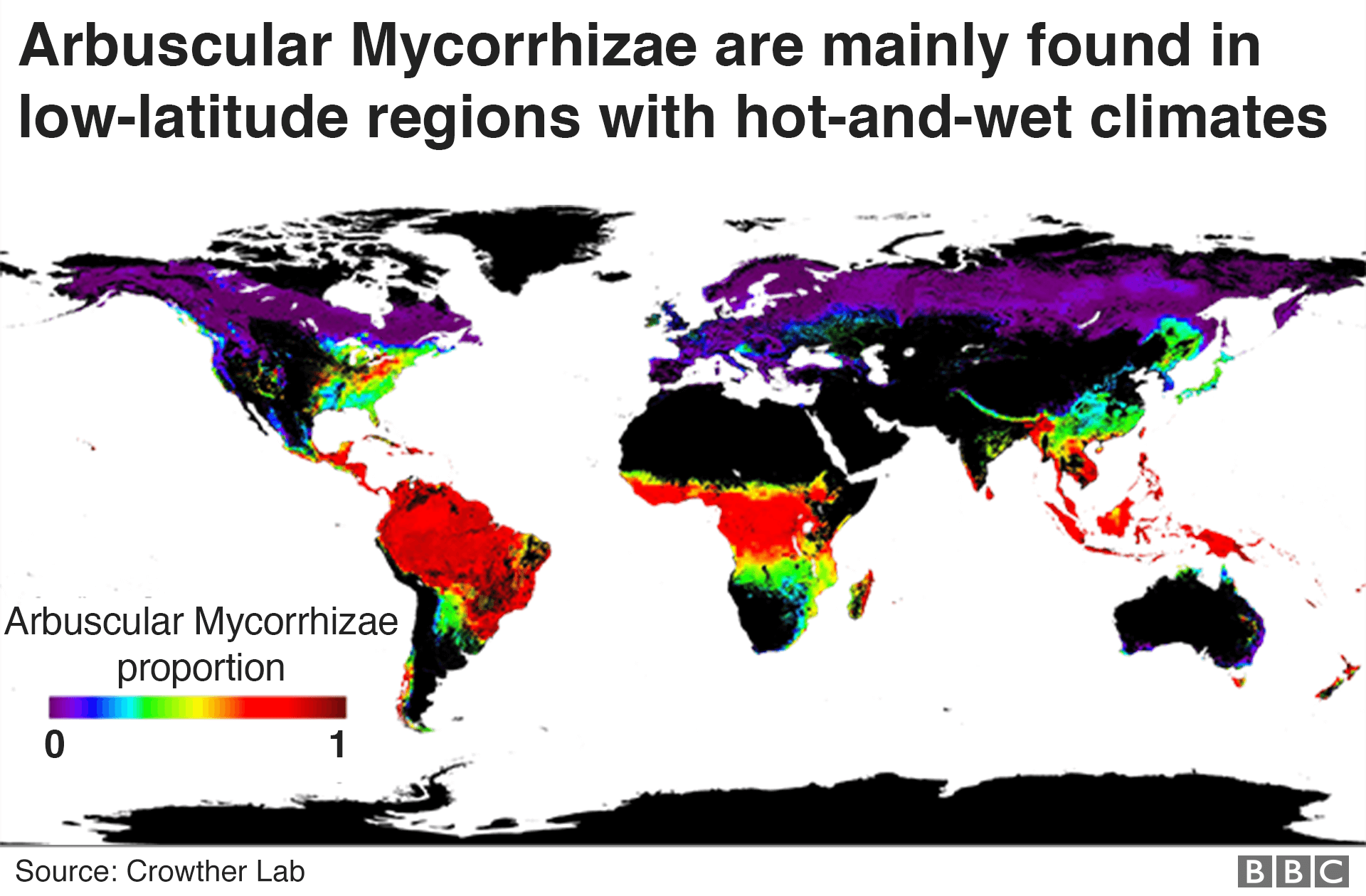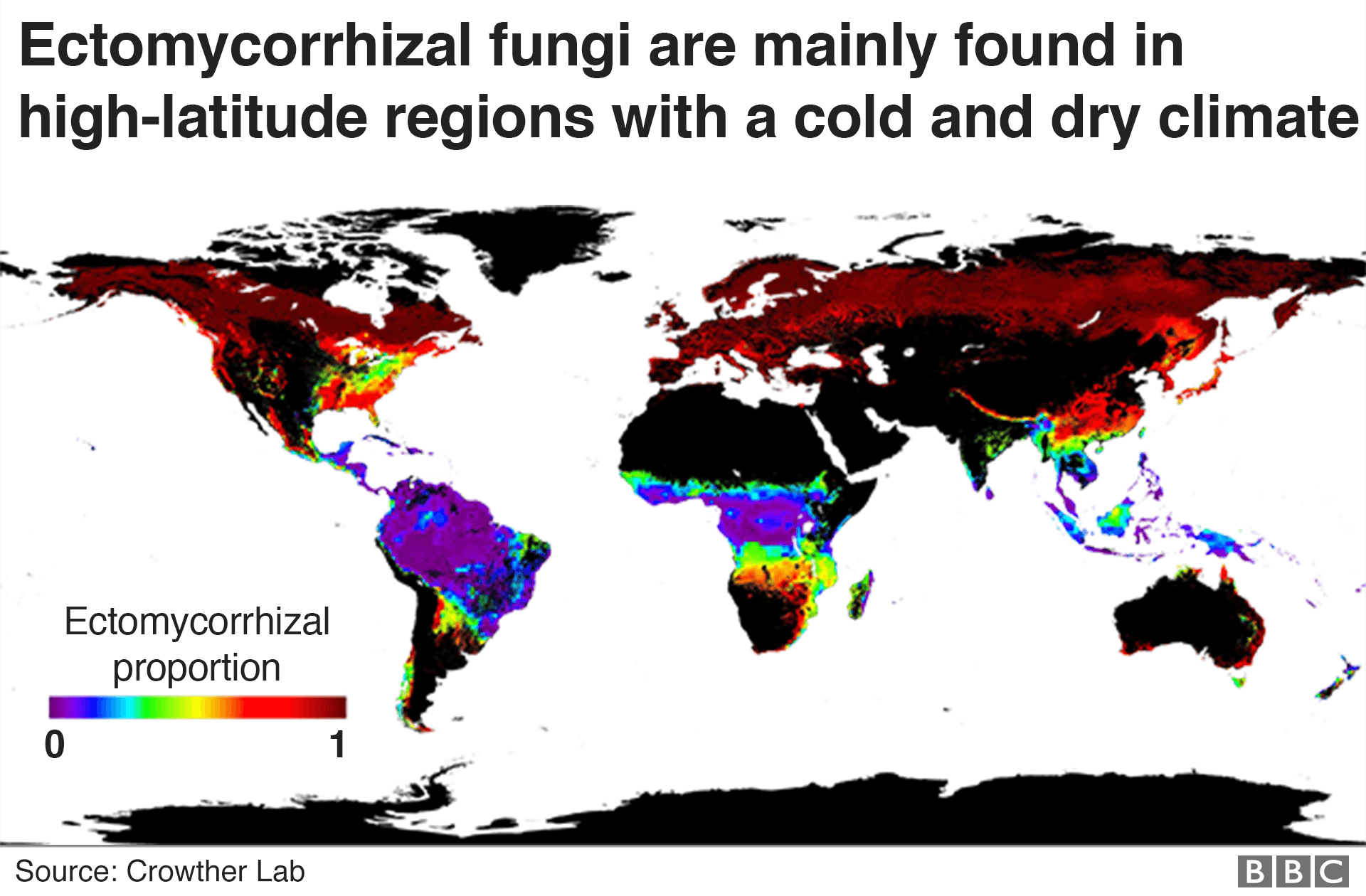Just how many different species live on this planet? Noone knows, for sure. There are zillions of insects and microorganisms that haven’t been recognized. And there are fuzzy cases like symbiotic fungi and viruses that challenge the very definition of the concept of a “species”.
But you’d think that big things that humans deal with all the time would be pretty well cataloged. Maybe not.
This winter a huge coalition of researchers reported a global survey of trees, and estimate that there may well be as many as 14% more species than previously recorded [2]. Cool!
This study surveyed a sample of tens of thousands of plots around the planet, identifying 73,000 some species of trees. Statistical analysis suggests that there are probably 9,000 more species not identified in the samples. This is about 14%.
The estimated additional species are everywhere, though many are certainly lurking in rapidly disappearing South American forests [1].
Why would there be so many “unknown” species? Well, basically, the unknowns are likely rare, a few individuals in a few locations. How ever you sample, you will always miss a few of the rarest individuals. One reason for this very large survey was to increase the coverage to try to estimate these rare cases.
(This kind of survey needs to be done with care. The research report explains the sampling and statistical analysis in detail. [2])
One reason the number of species is of interest is that it reflects the diversity of the ecosystem, the “species richness”. As forests disappear due to anthropogenic stresses, they also lose diversity. It is useful to know the current state of the forests, as they continue to change rapidly in this very stressful century.
And, of course, trees are habitats for many other species above and below ground. So, the diversity of trees is a strong indication of the state of the whole ecosystem.
- Helen Briggs, Earth has more tree species than we thought, in BBC News – Science & Environment, February 1, 2022. https://www.bbc.com/news/science-environment-60198433
- Roberto Cazzolla Gatti, Peter B. Reich, Javier G. P. Gamarra, Tom Crowther, Cang Hui, Albert Morera, Jean-Francois Bastin, Sergio de-Miguel, Gert-Jan Nabuurs, Jens-Christian Svenning, Josep M. Serra-Diaz, Cory Merow, Brian Enquist, Maria Kamenetsky, Junho Lee, Jun Zhu, Jinyun Fang, Douglass F. Jacobs, Bryan Pijanowski, Arindam Banerjee, Robert A. Giaquinto, Giorgio Alberti, Angelica Maria Almeyda Zambrano, Esteban Alvarez-Davila, Alejandro Araujo-Murakami, Valerio Avitabile, Gerardo A. Aymard, Radomir Balazy, Chris Baraloto, Jorcely G. Barroso, Meredith L. Bastian, Philippe Birnbaum, Robert Bitariho, Jan Bogaert, Frans Bongers, Olivier Bouriaud, Pedro H. S. Brancalion, Francis Q. Brearley, Eben North Broadbent, Filippo Bussotti, Wendeson Castro da Silva, Ricardo Gomes César, Goran Češljar, Víctor Chama Moscoso, Han Y. H. Chen, Emil Cienciala, Connie J. Clark, David A. Coomes, Selvadurai Dayanandan, Mathieu Decuyper, Laura E. Dee, Jhon Del Aguila Pasquel, Géraldine Derroire, Marie Noel Kamdem Djuikouo, Tran Van Do, Jiri Dolezal, Ilija Đ Đorđević, Julien Engel, Tom M. Fayle, Ted R. Feldpausch, Jonas K. Fridman, David J. Harris, Andreas Hemp, Geerten Hengeveld, Bruno Herault, Martin Herold, Thomas Ibanez, Andrzej M. Jagodzinski, Bogdan Jaroszewicz, Kathryn J. Jeffery, Vivian Kvist Johannsen, Tommaso Jucker, Ahto Kangur, Victor N. Karminov, Kuswata Kartawinata, Deborah K. Kennard, Sebastian Kepfer-Rojas, Gunnar Keppel, Mohammed Latif Khan, Pramod Kumar Khare, Timothy J. Kileen, Hyun Seok Kim, Henn Korjus, Amit Kumar, Ashwani Kumar, Diana Laarmann, Nicolas Labrière, Mait Lang, Simon L. Lewis, Natalia Lukina, Brian S. Maitner, Yadvinder Malhi, Andrew R. Marshall, Olga V. Martynenko, Abel L. Monteagudo Mendoza, Petr V. Ontikov, Edgar Ortiz-Malavasi, Nadir C. Pallqui Camacho, Alain Paquette, Minjee Park, Narayanaswamy Parthasarathy, Pablo Luis Peri, Pascal Petronelli, Sebastian Pfautsch, Oliver L. Phillips, Nicolas Picard, Daniel Piotto, Lourens Poorter, John R. Poulsen, Hans Pretzsch, Hirma Ramírez-Angulo, Zorayda Restrepo Correa, Mirco Rodeghiero, Rocío Del Pilar Rojas Gonzáles, Samir G. Rolim, Francesco Rovero, Ervan Rutishauser, Purabi Saikia, Christian Salas-Eljatib, Dmitry Schepaschenko, Michael Scherer-Lorenzen, Vladimír Šebeň, Marcos Silveira, Ferry Slik, Bonaventure Sonké, Alexandre F. Souza, Krzysztof Jan Stereńczak, Miroslav Svoboda, Hermann Taedoumg, Nadja Tchebakova, John Terborgh, Elena Tikhonova, Armando Torres-Lezama, Fons van der Plas, Rodolfo Vásquez, Helder Viana, Alexander C. Vibrans, Emilio Vilanova, Vincent A. Vos, Hua-Feng Wang, Bertil Westerlund, Lee J. T. White, Susan K. Wiser, Tomasz Zawiła-Niedźwiecki, Lise Zemagho, Zhi-Xin Zhu, Irié C. Zo-Bi and Jingjing Liang, The number of tree species on Earth. Proceedings of the National Academy of Sciences, 119 (6):e2115329119, 2022. http://www.pnas.org/content/119/6/e2115329119.abstract


